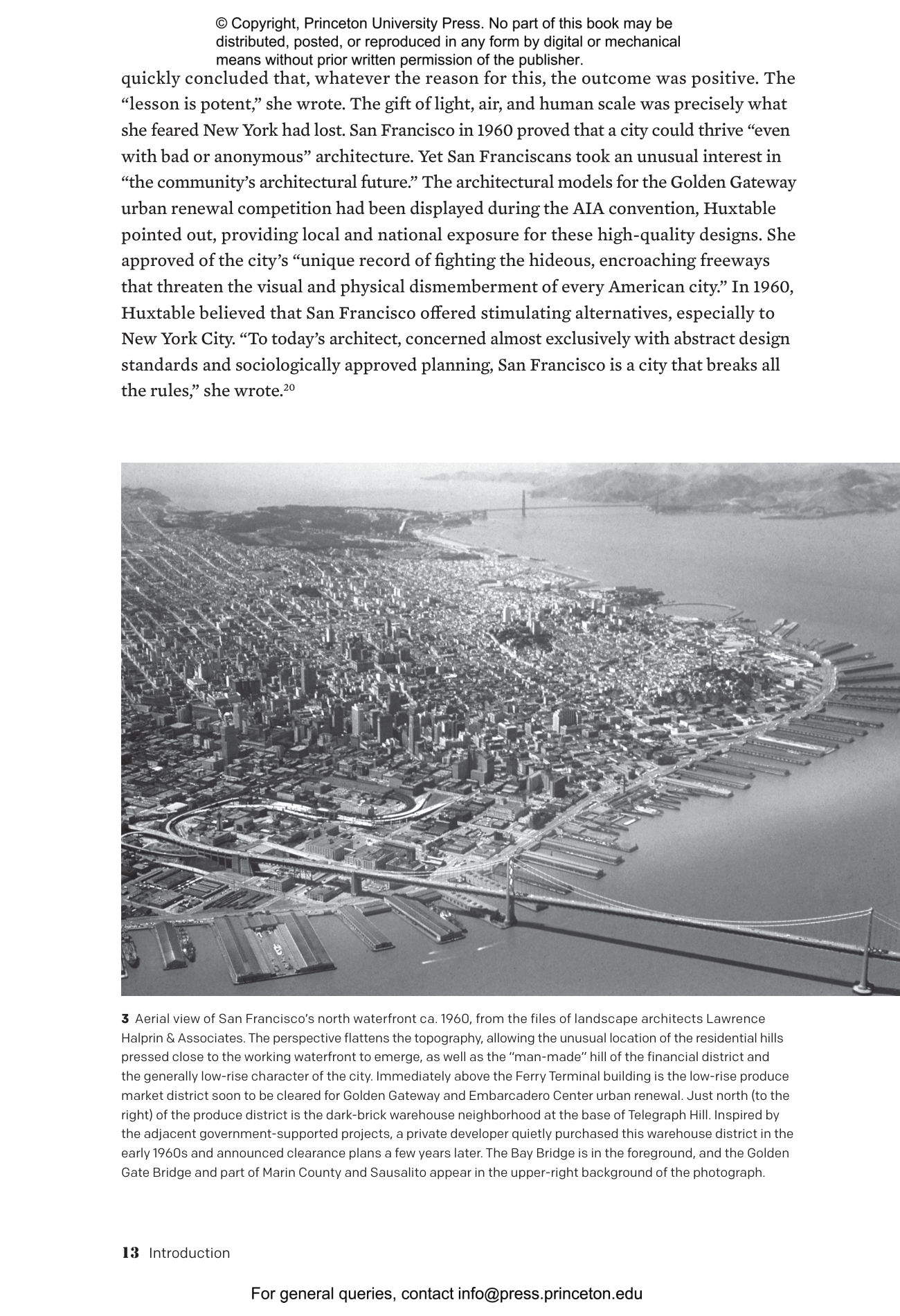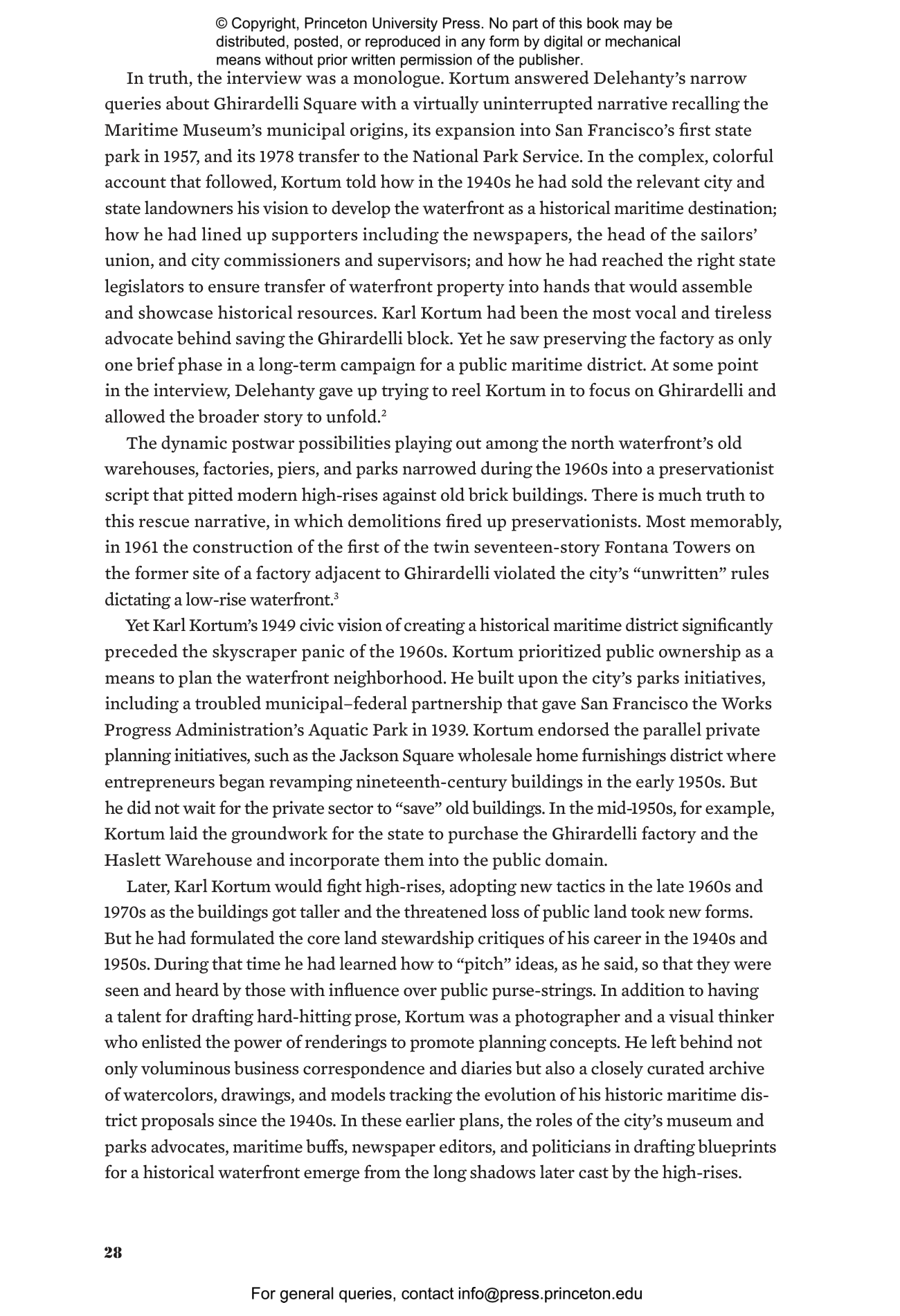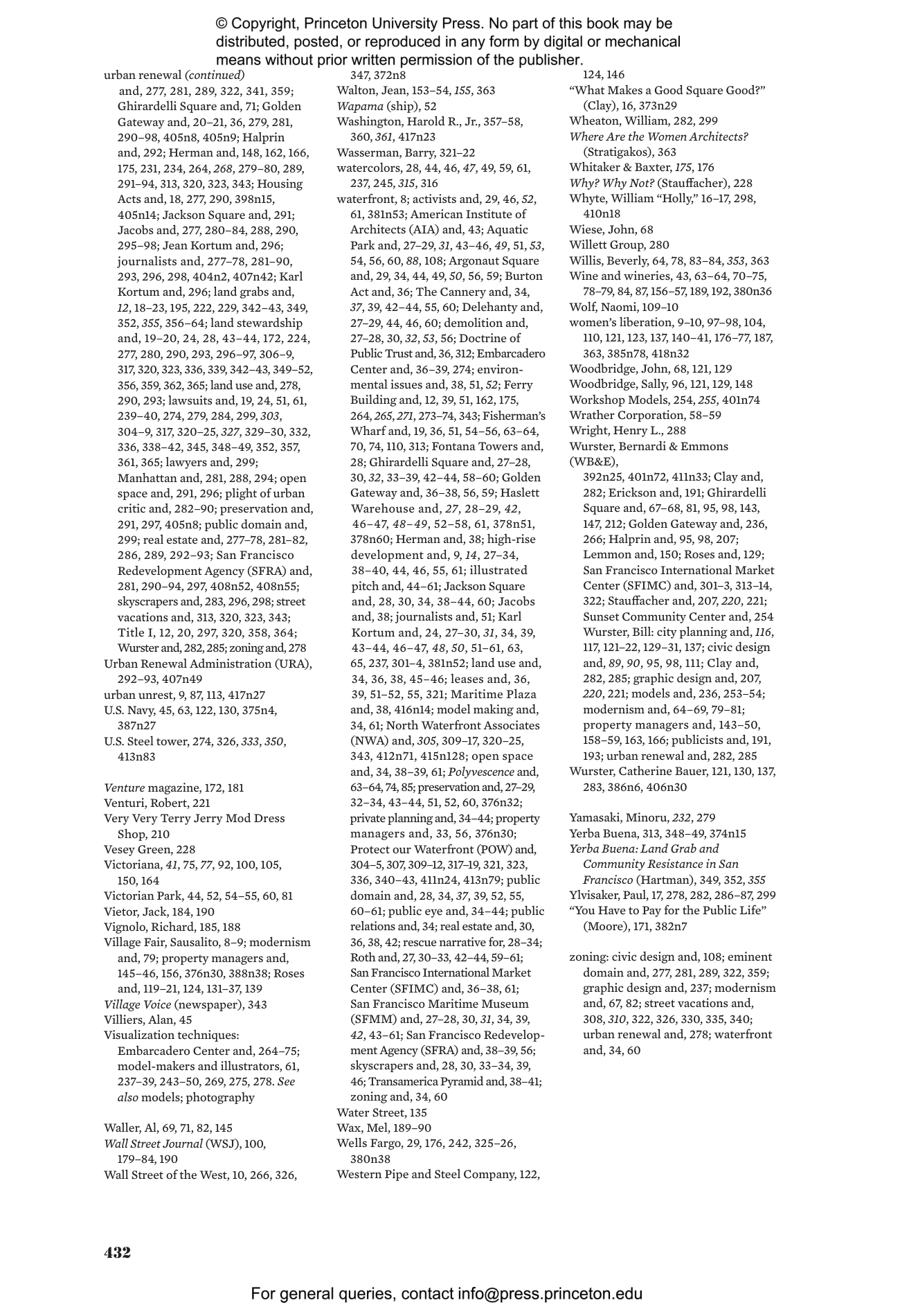Designing San Francisco is the untold story of the formative postwar decades when U.S. cities took their modern shape amid clashing visions of the future. In this pathbreaking and richly illustrated book, Alison Isenberg shifts the focus from architects and city planners鈥攖hose most often hailed in histories of urban development and design鈥攖o the unsung artists, activists, and others who played pivotal roles in rebuilding San Francisco between the 1940s and the 1970s.
Previous accounts of midcentury urban renewal have focused on the opposing terms set down by Robert Moses and Jane Jacobs鈥攑ut simply, development versus preservation鈥攁nd have followed New York City models. Now Isenberg turns our attention west to colorful, pioneering, and contentious San Francisco, where unexpectedly fierce battles were waged over iconic private and public projects like Ghirardelli Square, Golden Gateway, and the Transamerica Pyramid.
When large-scale redevelopment came to low-rise San Francisco in the 1950s, the resulting rivalries and conflicts sparked the proliferation of numerous allied arts fields and their professionals, including architectural model makers, real estate publicists, graphic designers, photographers, property managers, builders, sculptors, public-interest lawyers, alternative press writers, and preservationists. Isenberg explores how these centrally engaged arts professionals brought new ideas to city, regional, and national planning and shaped novel projects across urban, suburban, and rural borders. San Francisco鈥檚 rebuilding galvanized far-reaching critiques of the inequitable competition for scarce urban land, and propelled debates over responsible public land stewardship. Isenberg challenges many truisms of this renewal era鈥攅specially the presumed male domination of postwar urban design, showing how women collaborated in city building long before feminism鈥檚 impact in the 1970s.
An evocative portrait of one of the world鈥檚 great cities, Designing San Francisco provides a new paradigm for understanding past and present struggles to define the urban future.
Awards and Recognition
- Winner of the 2018 PROSE Award for Architecture & Urban Planning, Association of American Publishers
Alison Isenberg is professor of history at Princeton University and founding director of the Princeton-Mellon Initiative in Architecture, Urbanism, and the Humanities. She is the author of Downtown America: A History of the Place and the People Who Made It.
"Isenberg, a professor of history at Princeton University, dug deep to capture the transitional years when the city's establishment was on the verge of being altered by cultural forces that it could not control. . . . [Designing San Francisco] deepens our understanding of how today’s landscape came to be—and the bullets we dodged along the way."鈥擩ohn King, San Francisco Chronicle
"Designing San Francisco is an outstanding contribution to the growing literature on the City by the Bay, and is indeed one of the finest books in recent memory about American city building in the postwar period."鈥擮cean Howell, American Historical Review
"The urban historian Alison Isenberg’s Designing San Francisco is, among its many other virtues, a vital text for helping landscape architects think through this dilemma. . . . Isenberg is a clear and engaging writer who is both transparent and persuasive in presenting her own angle on the story. . . . Designing San Francisco is a vital critique of the standard narrative of design authorship."鈥擩ustin Parscher, Landscape Architecture Magazine
"In Designing San Francisco: Art, Land, and Urban Renewal in the City by the Bay, the historian Alison Isenberg points to a shift around this time in the way San Francisco practiced its urban renewal. Instead of being designed from on high, in the style of Robert Moses in New York, the postwar city grew largely through collaborative planning. This didn’t mean that messy neighborhoods were left alone to find their internal order (as in Jane Jacobs’s preservationist ideal) but that artists, property managers, activists, and others all got involved."鈥擭athan Heller, The New Yorker
"Alison Isenberg's Designing San Francisco explores a series of controversies from the 1940s through the 1970s, decades when activists, artists, environmentalists, and preservationists challenged establishment approaches to land use, public sculpture, and urban redevelopment in the Bay Area. Her fascinating book is essential reading for anyone interested in the politics of architecture, landscape architecture, and urban design."—Dolores Hayden, Yale University, author of The Power of Place: Urban Landscapes as Public History
"Designing San Francisco makes a major contribution to the history and practice of urban planning and architecture. Probing deeply into how urban plans are worked out on the ground by a broad cast of city builders, Isenberg offers the first serious and persuasive alternative to the longstanding binary opposition between the partisans of Jane Jacobs and Robert Moses."—Mary P. Ryan, author of Mysteries of Sex: Tracing Women and Men through American History
"Masterful and compelling."—Julia L. Foulkes, author of To the City: Urban Photographs of the New Deal











































